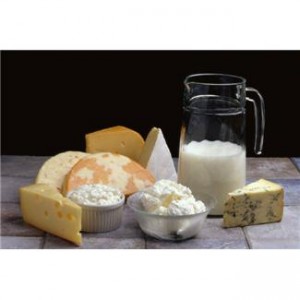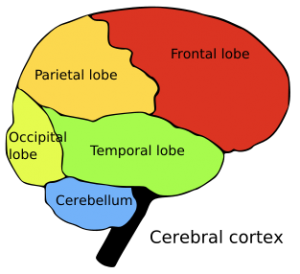 In chemistry, the term physical change implies that a substance is changing form, like when water freezes to form ice. The water has not changed its identity, only its appearance from a liquid to a solid. Physical processes like shaking, hitting or even chewing can help things change their form. For example, when we chew our food, chewing (a physical process) helps us to make food easier to swallow by making it into a liquid. In this activity students will use shaking (a physical process) to transform a liquid (heavy whipping cream) into a solid.
In chemistry, the term physical change implies that a substance is changing form, like when water freezes to form ice. The water has not changed its identity, only its appearance from a liquid to a solid. Physical processes like shaking, hitting or even chewing can help things change their form. For example, when we chew our food, chewing (a physical process) helps us to make food easier to swallow by making it into a liquid. In this activity students will use shaking (a physical process) to transform a liquid (heavy whipping cream) into a solid.
In this activity, students will observe how physical processes like shaking can cause things to change. Materials:
Small glass jar with lid (baby food jars are the best)
Heavy whipping cream
Instructions: 1. Fill each jar about three-quarters of the way full.
2. Tightly seal each jar with its lid.
3. Shake the jar for 10-15 minutes or until the whipping cream has solidified.
How It Works: When the jar is shaken the particles are forced close together. A few particles clump together and soon, with all the shaking more and more particles clump together until most of are in a solid.
Discussion Questions to Ask: What did we add into the jar?
- What did we do to change the heavy whipping cream?
- When was the whipping cream a liquid?
- When was the whipping cream a solid?
Did you know that cooking is a chemical and a physical process? Exploring other food processes like making cheese, baking bread, even making a cake are easy ways to introduce the concept of physical and chemical changes. Chemistry is not just only in the lab or taught during science class. It is important to help young students recognize chemistry concepts inside and outside of the classroom. For more information on how to teach young students about chemical and physical change, visit: http://acswebcontent.acs.org/scienceforkids/index.html#Reactions
 For some of our Fun Learning Science games such as How to Become a Teenage Genius by playing Our Learning Brain, you can visit here:
For some of our Fun Learning Science games such as How to Become a Teenage Genius by playing Our Learning Brain, you can visit here:
http://www.science-lessons.ca/games/brain.html
http://www.science-lessons.ca/games/forceenergy.html
http://www.science-lessons.ca/games/weatherbingo4.html
http://www.literature-enrichment.com/
]]>
In this activity, students will see how gas can be made using a chemical reaction and how gas can be used to inflate a balloon.
Materials:
Several empty and dry plastic bottles (a disposable water bottle is fine)
Baking Soda
Vinegar
Balloon
Tablespoon
Funnel (optional)
Instructions
- Place 2-3 tablespoons of baking soda in the empty balloon. Note: A funnel comes in handy for this step.
- Fill the empty bottle with 1-2 inches of vinegar.
- Attach the balloon to the top of the plastic bottle, but be sure not to let any baking soda get into the bottle.
- Lift the balloon and let the baking soda fall into the bottle.
- The liquid will begin to fizzle and the balloon should begin to inflate. Note: You may want to hold the rim of the bottle to be sure the balloon doesn’t fall off.
How It Works:
The baking soda and vinegar mix to form CO2 (carbon dioxide) which is a gas. When the gas is formed, there is nowhere for it to escape, but into the inside of the balloon. As the gas particles begin moving around, colliding with each other and the walls of the balloons, it is able to inflate the balloon.
There are lots of ways that chemicals help make our lives easier and also safer. Airbags work using a chemical reaction and so too do ice packs. Even those bright glow sticks are made possible by the wonderful world of Chemistry. Teaching elementary school students about chemical reactions is best done near sinks as these can be messy learning activities. For more ideas about how to teach young students and fun videos/songs about chemical reactions, visit: http://www.watchknowlearn.org/SearchResults.aspx?SearchText=gases
For another of our Fun Games for Learning Science concepts, feel free to visit here:
http://www.science-lessons.ca/games/space.html
http://www.science-lessons.ca/games/weather3.html
http://www.science-lessons.ca/games/weatherbingo4.html
http://www.science-lessons.ca/games/weather8.htm.http://www.science-lessons.ca/games/planetsbingo.html
]]>